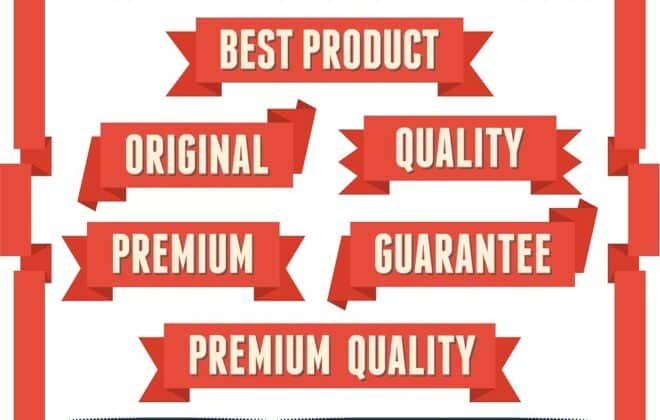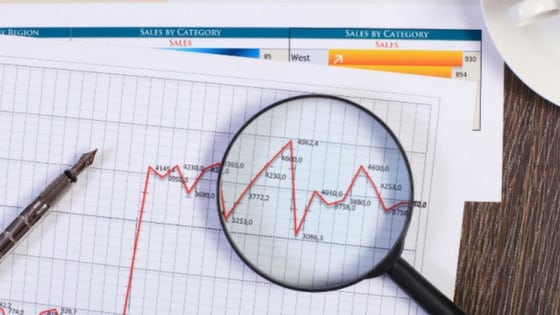
Can Retailers Use Sales And Promotions When Raising Their Prices? 🧮
Retailers are becoming more adept at maximising profits through pricing. List-Price Synchronisation (PILPS), for example, is a new price rise technique within broader advertising promotion strategy which has received a lot of unwanted attention in the press recently. Many have argued that PILPS it is a stealth price increase method because it highlights discounts and savings on products during sales to draw in customers to websites when in fact these prices have gone up (and sometimes considerably) compared to baseline prices. According to reports, for example, an increasing number of retailers have employed PILPS to recover from prior losses by increasing margins and sales at the same time. However, PILPS has received numerous criticisms for misleading pricing. What is the nature of this new strategy? And how can you use it successfully without causing outrage among customers and industry analysts?
In this article, we will look at a new emerging retail advertising promotion strategy; paying particularly attention to Price Increase and List-Price Synchronisation (PILPS). We talk about how it’s done, how it boosts profit margins, and why it’s challenging to implement. Then we make recommendations on how businesses can use it effectively.
We argue that strategically increasing prices are an effective way to increase profits. At Taylor Wells, we believe that being customer-focused is the key to successful price increases. By the end, you will know how to maximise your profits by improving your pricing strategy and leveraging price increases.
An Advertising Promotion Strategy That Involves Raising The Price Of Your Products
An advertising promotion strategy comprises the methods and tactics that businesses use in their sales and marketing plan to increase the demand for their product or service. Is it possible for retailers to include price increases in their advertising promotion strategy?
There’s a new name coined for price list and discount optimisation in the media and it’s called: Price Increase and List-Price Synchronisation (PILPS). This is a new online practice, and what makes it so interesting is that it involves retailers presenting price increases as significant discounts, often during a sale.
For example, there have also recently been a few cases of PILPS in both the gaming and retail industries. In fact, some studies of online retail cite how an average 23% price increase on specific categories during a sale may have helped an online retailer boost their sales ranking online by an average of 11% before the lead-up to Christmas.
PILPS appears to be clever pricing and advertising promotion strategy designed to boost profits. Especially now that businesses can use the upcoming holidays to recover from recent losses caused by the pandemic, inflation, and other factors that contributed to the global economic downturn. However, capitalising on this new method will be difficult. Companies must be strategic. Otherwise, it will only lead to controversy.
Some experts contend that presenting price increases as markdowns is manipulative and unfair. Many have said these “discounts” are purposely designed to mislead shoppers into thinking they are buying a great deal when in fact, they are buying a discounted item for more than its baseline price. But there are still others who praise the tactic as clever and wise. But is this pricing lawful?

Discussion On PILPS As An Advertising Promotion Strategy
Is PILPS (Price Increase and List-Price Synchronisation) legal? What does the false advertising and price law in Australia say?
The truth is that it is still unclear and will depend on the regulations in the territory where it is being implemented. So, how about Australia? Section 18 of Australian Consumer Law prohibits a person from engaging in conduct in trade or commerce that is misleading or deceptive or is likely to mislead or deceive. Meanwhile, Section 29 of Australian Consumer Law prohibits false or misleading representations about goods or services.
Thus, the Australian Consumer Law mentions not to mislead consumers with prices. However, there is no precise definition of misleading or deceptive conduct in ACL. This means authorities would have to investigate further and determine if pricing is misleading on a case-by-case basis.
Regulators are yet to develop a reliable mechanism for tracking online prices due to the internet being crowded with flash sales and price changes. Regulations also make no mention of the timing of a new list price and/or provide specific guidelines and rules on the time between a new list price being launched and a sale.
The contention in the media, however, is based on misleading consumers with prices that are in fact price increases during sales time. And advertising prices as discounts when they are substantially above baseline prices. The problem is that current false advertising price laws are still out of step with the evolution of eCommerce. Regulations of timing between launching a new list price and a sale would be very helpful to both businesses and consumers to clarify this murky situation.
There’s still a long way before digital prices are truly regulated. Authorities will still have a lot of work to do to understand the increasingly volatile eCommerce economy. Then, they will need to create new marketing and pricing policies.
Implications Of PILPS As An Advertising Promotion Strategy
Despite current criticisms, PILPS is a good way to raise prices when included in your advertising promotion strategy. No matter what business you’re in, raising prices at some point is unavoidable. It takes strategic thinking to do it in a way that does not harm your customer relationships – or your sales revenue. And PILPS can enable you to do so without losing sales if you consider what your customers value.
Furthermore, PILPS acquaints your customers with price changes. As a result, it can pave the way for you to implement a demand-based or dynamic pricing strategy for eCommerce business. This has been shown to increase profits while emphasising the value of your products. PILPS’s strong points can be a valuable asset to your profitability in the long run.
If online prices are to be regulated, clearer costing and pricing policies are likely to be implemented, as ACL clauses on the timing of price optimisation and the definition of misleading prices remain ambiguous. So, how should you get started with your PILPS strategy?
Implementing PILPS As An Advertising Promotion Strategy
Don’t fret; you can bring this new method of raising prices into action. You can prepare your company even before clear regulations are set by establishing reasonable prices and discounts. How can businesses successfully implement PILPS without getting into controversies?
1. Recognise the value that all of your products can bring to your customers.
You most likely have both new and old product stock. Some are newer versions, while others are older. These various products, of course, provide varying levels of value to customers. For example, a new iPhone model has more features and is more trendy than a model from ten years ago.
The same is true for clothing; a new arrival sweater is likely to be of higher quality than the same sweater obtained a year ago. This will be taken into account when developing your pricing strategy for your eCommerce business and products.
2. Examine the willingness of your customers to pay for each of your products.
Knowing your products’ value is important. Still, customers’ willingness does not only depend on your products value. Of course, it is primarily driven by their needs and wants. You have to take this into consideration when setting your price increase. How much are they willing to pay for an item even if you increase its price? And by how much?
Customers’ willingness to pay is also influenced by other factors such as seasons. For example, during winter, you can expect people to have higher demand for coats. This time, it is likely that they are willing to pay more for certain thicker clothing than when it is still autumn or spring.
3. Implement your price increase strategy or PILPS based on the value of your product and the willingness of your customers to pay.
Only raise the prices of products that customers value the most. These are the products that, even if customers notice a price increase, they are still willing to pay for. As a result, there will be no complaints or negative feedback. Don’t raise the price of products that your customers are unlikely to value any longer.
You could even consider lowering their prices if the price increase for your other products compensates for the lost margin. Customers, especially those looking for the best deals or value for their money, react viscerally to discounts. They are currently risk-averse, according to recent studies, and the economy is uncertain. They will feel cheated and lose trust if they are misled. In the long run, the brand’s reputation and profits will suffer.
When launching your discount strategies and tactics, make sure you’re giving your customers real value.
Sales prices must be meaningful and beneficial. Make sure the price reduction is substantial enough for the customer to believe they are getting a legitimate and fair deal. You can also consider hiring a pricing team. Our findings show that with the right set-up and pricing team in place, incremental earnings gains can begin to occur in less than 12 weeks.
After 6 months, the team can capture at least 1.0-3.25% more margin using better price management processes. After 9-12 months, businesses often generate between 7-11% additional margin each year. As they identify more complex and previously unrealised opportunities, efficiencies, and risks.
〉〉〉 Get Your FREE Pricing Audit 〉〉〉
Bottomline
Price increases are an unavoidable part of doing business, whether to combat economic difficulties or to increase profits. Even if it is an online business, it is not simple to set up. Customers will react in addition to the rules that must be followed. The best thing for businesses to do when implementing PILPS is to do so in a value-based manner. Examine your customer value drivers in relation to your products. This way, you can maximise your profits by leveraging price increases and discounts.
For a comprehensive view and marketing research on integrating a high-performing capability team in your company,
Are you a business in need of help to align your pricing strategy, people and operations to deliver an immediate impact on profit?
If so, please call (+61) 2 9000 1115.
You can also email us at team@taylorwells.com.au if you have any further questions.
Make your pricing world-class!
Related Posts
Leave a Reply Cancel reply
Categories
- marketing strategy (26)
- Organisational Design (14)
- Podcast (114)
- Pricing Capability (87)
- Pricing Career Advice (10)
- Pricing Recruitment (19)
- Pricing Strategy (291)
- Pricing Team Skills (13)
- Pricing Teams & Culture (25)
- Pricing Transformation (47)
- Revenue Model (25)
- Sales Effectiveness (27)
- Talent Management (7)
- Technical Pricing Skills (35)






